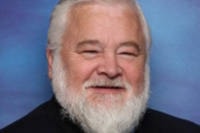Rev. Yme Woensdregt
Last week, I expanded what I had written previously about the Doctrine of Discovery. Pronounced in 1493, the Doctrine allowed the colonial powers to “discover”, claim and exploit the lands of indigenous peoples all around the world, including Canada.
At the end of last week’s column, I quoted a unanimous decision in 2014 of the Supreme Court of Canada that “The doctrine of terra nullius (that no one owned the land prior to European assertion of sovereignty) never applied in Canada, as confirmed by the Royal Proclamation of 1763.”
What is that Royal Proclamation?
The Royal Proclamation was issued in 1763 by King George III of Great Britain to claim British territory in North America after Britain won the Seven Years War. King George claimed ownership over North America, and this Proclamation set out guidelines for European settlement of Aboriginal territories in these lands.
It explicitly states that aboriginal title has existed and continues to exist, and that all land would be considered Aboriginal land until ceded by treaty. Settlers in the lands could not claim the lands for themselves. Only the Crown could buy land from the original Aboriginal occupants, and only the Crown could sell the land to the settlers.
The key phrase is “aboriginal title”. It refers to the inherent aboriginal right to a particular land or territory. Canadian law recognizes Aboriginal title as a unique collective right to the use of and jurisdiction over a group’s ancestral territories. This right is not granted by an external source. Rather, it is the direct result of Aboriginal peoples’ own occupation of and relationship with their home territories as well as their ongoing social structures and political and legal systems.
That is the Royal Proclamation to which the Supreme Court referred in its decision. In other words, unless indigenous peoples in Canada sold their land to the crown, who in turn sold it to settlers, the land continues to belong to the indigenous people.
This proclamation is at the heart of the understanding that the federal government needs to negotiate with indigenous people on a nation–to–nation basis. Many of the traditional lands of indigenous people were never sold or ceded by treaty to the Crown. As a result, Canadian law (as quoted by the Supreme Court) holds that the land still belongs to the indigenous people because they hold aboriginal title.
This Proclamation guarantees that indigenous peoples are viewed in law as people with authority and rights—which is exactly contrary to the Doctrine of Discovery.
Why is this important?
It is certainly important from an historical perspective. The lands which were conquered by colonial powers and claimed for their own purposes to be exploited were now deemed to still belong to the indigenous people. If our ancestors on the land did not purchase the land from the Crown, then the land in which we live does not belong to us.
It is even more important for how we move forward in our attempts at reconciliation and making peace. This Proclamation enshrines the nation–to–nation relationships between Indigenous and non–Indigenous Canadians that is at the heart of the kind of respect which reconciliation requires.
The Royal Proclamation makes it clear that Indigenous Peoples don’t need to prove their existing title to the land. That’s particularly important in BC, because the vast majority of provincial land has never been ceded by Indigenous Peoples. As a result, the argument has been made that all non–aboriginal settlement in BC is on stolen land.
That’s why, at the beginning of many gatherings, you will increasingly hear someone say that we are meeting on the unceded territory of the indigenous people of that place. Guidelines produced by the Canadian Association of University Teachers, for example, recommend the following acknowledgement to be used by the College of the Rockies: “We would like to begin by acknowledging that the land on which we gather is the traditional unceded territory of the Ktunaxa and Kinbasket Peoples. Five First Nations bands are located in the regional boundary of the College. Four bands are Ktunaxa and one is Secwepemc (Shuswap). We are grateful to have the opportunity to work in in this territory.”
We are living in a new time in our relationship with Indigenous People. As with any such a time, some people are afraid of what it might mean. It’s difficult to re–think how we have done things.
At the same time, it gives us great opportunity to work together in a spirit of true mutuality as we seek to reconcile with those whose ancestors have been on this land long before Columbus ever set foot on a ship.
All of that raises another question, perhaps the most important question of all. Why should we remember all this tragic part of our history?
I’ll have more to say about that next week.
Rev. Yme Woensdregt is Pastor at Christ Church Anglican in Cranbrook
